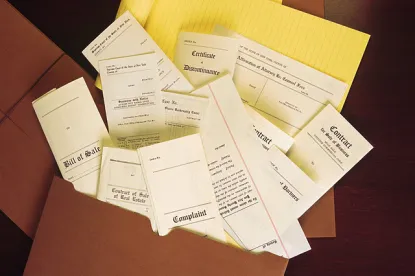Recently, in an unpublished decision, the Sixth Circuit illustrated that it was continuing last year’s trend in holding that district courts should allow parties to seal records only when compelling justifications exist. Danley v. Encore Capital Grp., Inc., No. 16-1670, 2017 U.S. App. LEXIS 3388 (6th Cir. Feb. 22, 2017). As you may recall, the Sixth Circuit issued a series of decisions last year that distinguished between the standards that apply to protective orders during discovery and sealing records in court filings. See Rudd Equip. Co. v. John Deere Constr. & Forestry Co., 834 F.3d 589 (6th Cir. 2016); Klingenberg v. Fed. Home Loan Mortg. Corp., 658 F. App’x 202 (6th Cir. 2016); Shane Grp., Inc. v. Blue Cross Blue Shield, 825 F.3d 299 (6th Cir. 2016).
In a very broad sense, the Sixth Circuit determined that parties during discovery may liberally designate information as subject to a protective order on a showing of good cause. Shane Grp., Inc., 825 F.3d at 305 (citing Fed. R. Civ. P. 26(c)(1)). But “[a]t the adjudication stage . . . different considerations apply” because the public has a strong interest in information placed in the public record. Id. (internal quotation marks and citation omitted). Thus, according to the Sixth Circuit, the proponent should explain why there are compelling reasons for sealing the records and why those reasons outweigh the public’s interest in disclosure. Id. at 307. Further, even when compelling justifications exist, the district court’s order must be narrowly tailored to serve the proffered justifications. Id. at 306. The district court “must set forth specific findings and conclusions, which justify nondisclosure to the public.” Id. (internal quotation marks and citation omitted). In Danley, the Sixth Circuit reversed the district court’s order granting in part and denying in part the plaintiff’s motion to unseal documents because the district court failed to set forth specific reasons why the public’s interest in access was outweighed by the compelling justifications for nondisclosure and why the sealing itself was no broader than necessary. 2017 U.S. App. LEXIS 3388, at *12–13. In doing so, the Court stated that a district court’s “obligation to explain the basis for sealing court records . . . is independent of whether anyone objects to it.” Id. at *13 (internal quotation marks and citation omitted).



 />i
/>i
